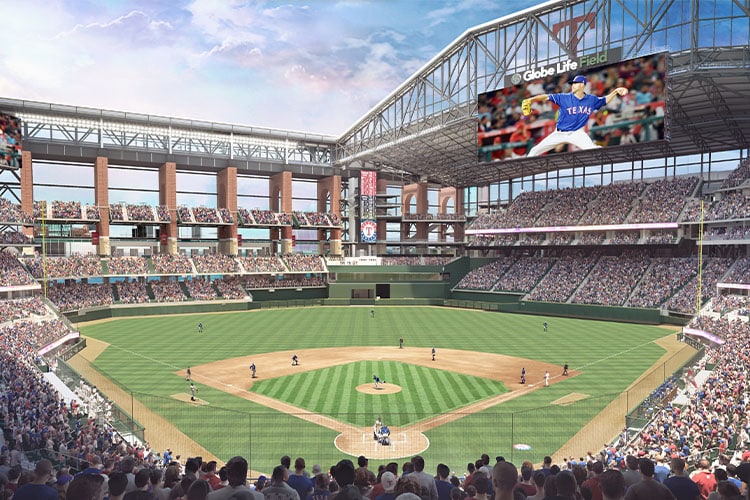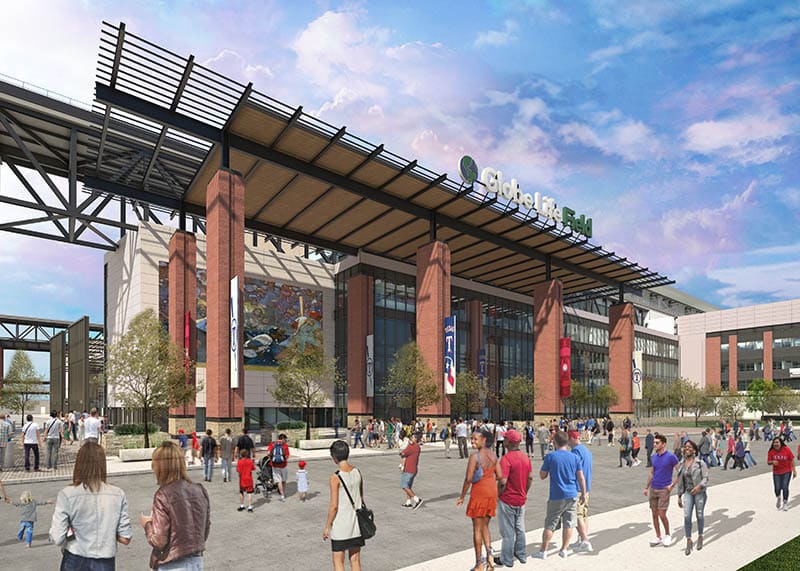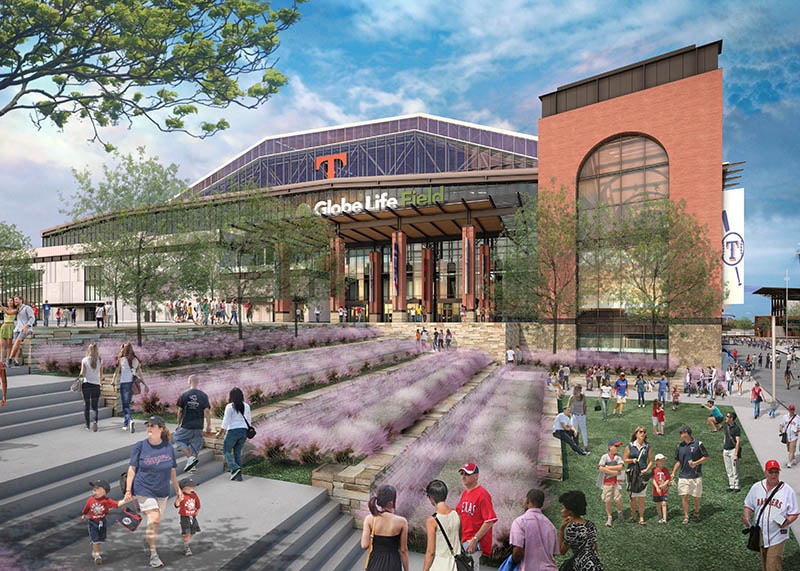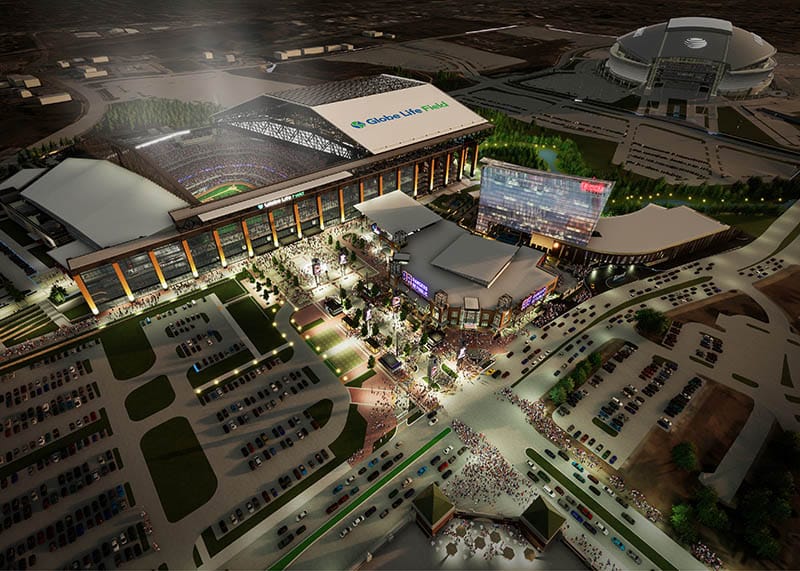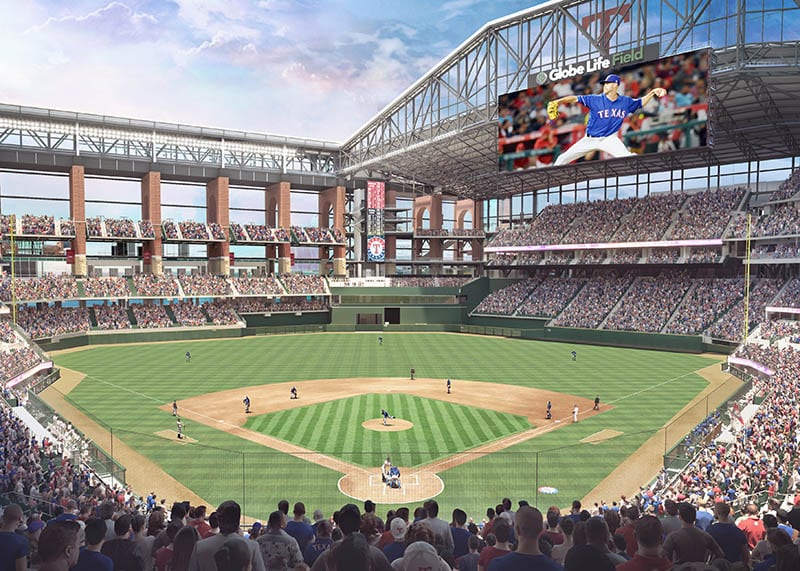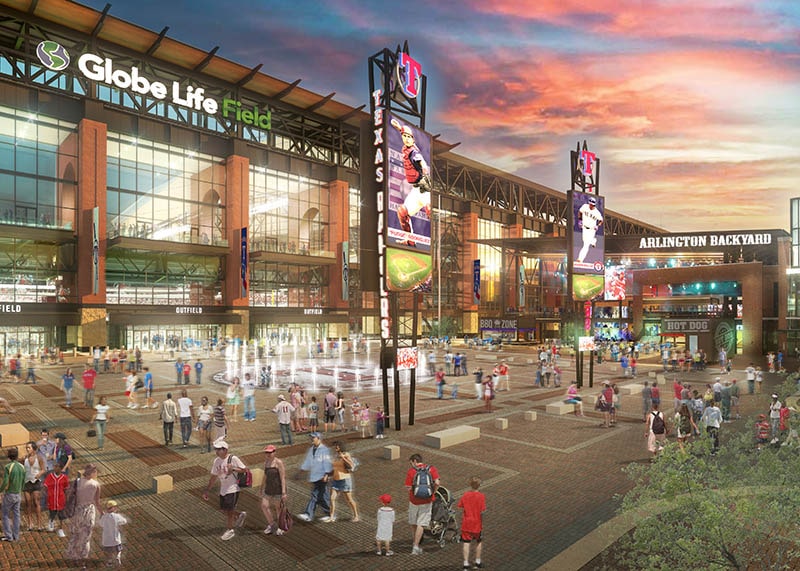On Opening Day in 2020, 40,000 spectators will fill Globe Life Field in Arlington, Texas, to watch the Texas Rangers baseball team inaugurate their new field. Most fans won’t have any idea who built the stadium, but at least one person in the stands will: Thomas Smith, senior project architect at HKS, the global architecture firm that designed the place. As a kid, Smith came with his family to see the Rangers play in their original home, Arlington Stadium, so being the project architect for the new digs is something of a dream come true for him.
Because of high, humid summer temperatures and plenty of precipitation in the Dallas-Fort Worth metropolitan area, the stadium will feature a state-of-the-art operable roof. Smith believes fans will be “blown away” by the roof, since with traditional domed stadiums or operable roofs, there’s minimal daylight. But at the new stadium, “we’ve worked to really concentrate on maximizing natural light,” he says. There’s an entire development going on outside the stadium, with a new hotel (also designed by HKS), restaurants, bars and entertainment areas, arranged around an outdoor plaza. The north wall of the stadium is entirely curtain wall, and will look out onto the hotel and plaza. “The stadium is going to feel connected to that outdoor space—it’ll have an outdoor feel with indoor climate control.”
As project architect, it is Smith’s job to make sure the entire team of architects, designers and consultants are on the same page and moving forward. On a project like this, there will be different project architects for the roof, the interior, the concourse and the exterior envelope. Smith works with all of them to ensure that everybody is on the same page. “I’m looking over the whole team holistically,” he explains. “I’m trying to make sure that each of them has the information that they need.” Considering the magnitude of the project, this is no small feat.

Throughout the process Smith relied on technology to ease the collaboration, communication, and efficiency of delivery. One tool that has been essential for HKS is Bluebeam Revu. The collaboration and editing software made the process “much more efficient,” Smith says, “and allowed myself and others to spend time where it matters.” In the early phases of the project, he used Studio Sessions, a real-time collaboration capability in Revu, to coordinate with the many other architects, designers and consultants working on the project. In all, about 60 people from HKS’s offices alone have worked on Globe Life Field.
The experience has been enjoyable for Smith and not just because he’s been a lifelong fan of the team, going all the way back to the days of Hall of Fame pitcher Nolan Ryan. “The Rangers are definitely a top-notch organization that have this vision of what they want and have been great along the way in terms of working together. As minor things popped up, we worked through those issues and found solutions to them, along with the construction team from Manhattan Construction Company.”
Things have come full circle in a way for Thomas Smith: “When The Ballpark in Arlington (now Globe Life Park) opened in April of 1994 my mom, my brother and I attended a pre-season game that year. When I first stepped in those gates and experienced the concourses, all the amenities, that was the first time I realized that you could apply architecture to sports.” Globe Life Field isn’t the only sports project Smith has worked on—he’s been working in sports facility design since he started his internship at HKS 19 years ago, and has been a part of projects ranging from college facilities to the professional ranks in football, basketball, and hockey, along with his specialty in baseball. “Sports was such a passion of mine growing up that I took that next step and realized, I can combine sports and architecture and make a career out of it,” Smith adds. And with the stadium measuring 1.7 million square feet, with five entrances, 780 foundation piers and 6,500 cubic yards of concrete columns, this stadium is sports architecture in a very big way. Fitting, for as they say, everything’s bigger in Texas.

